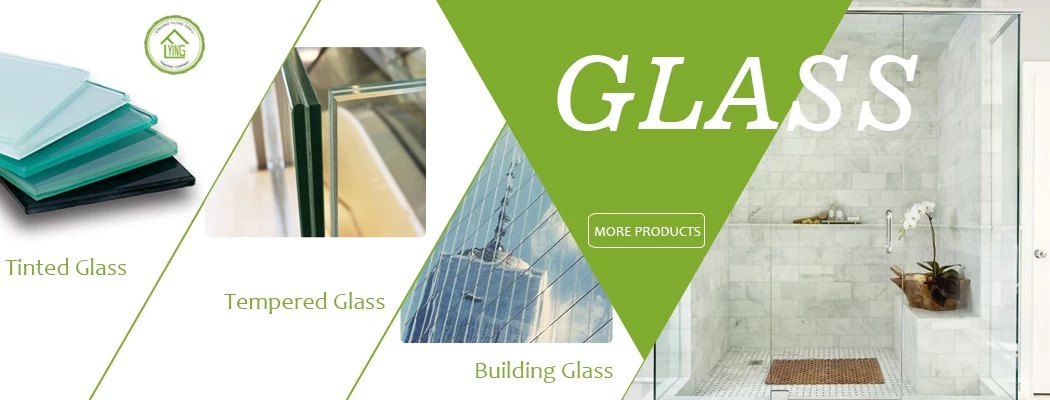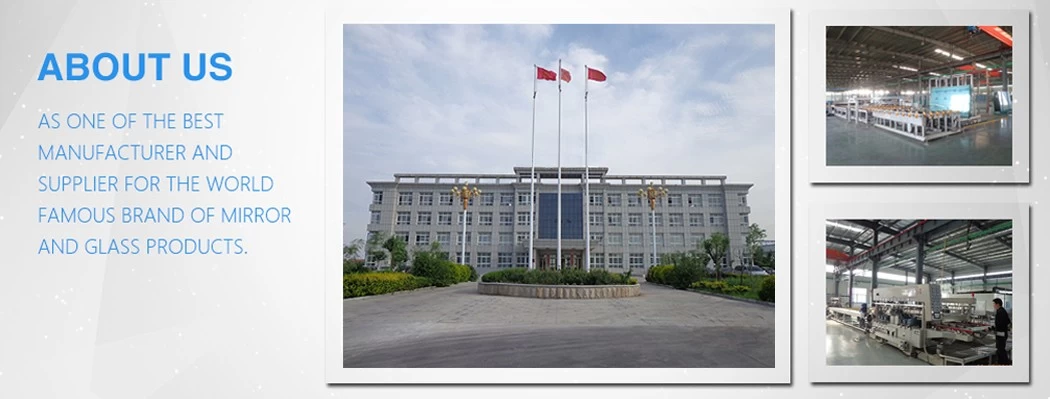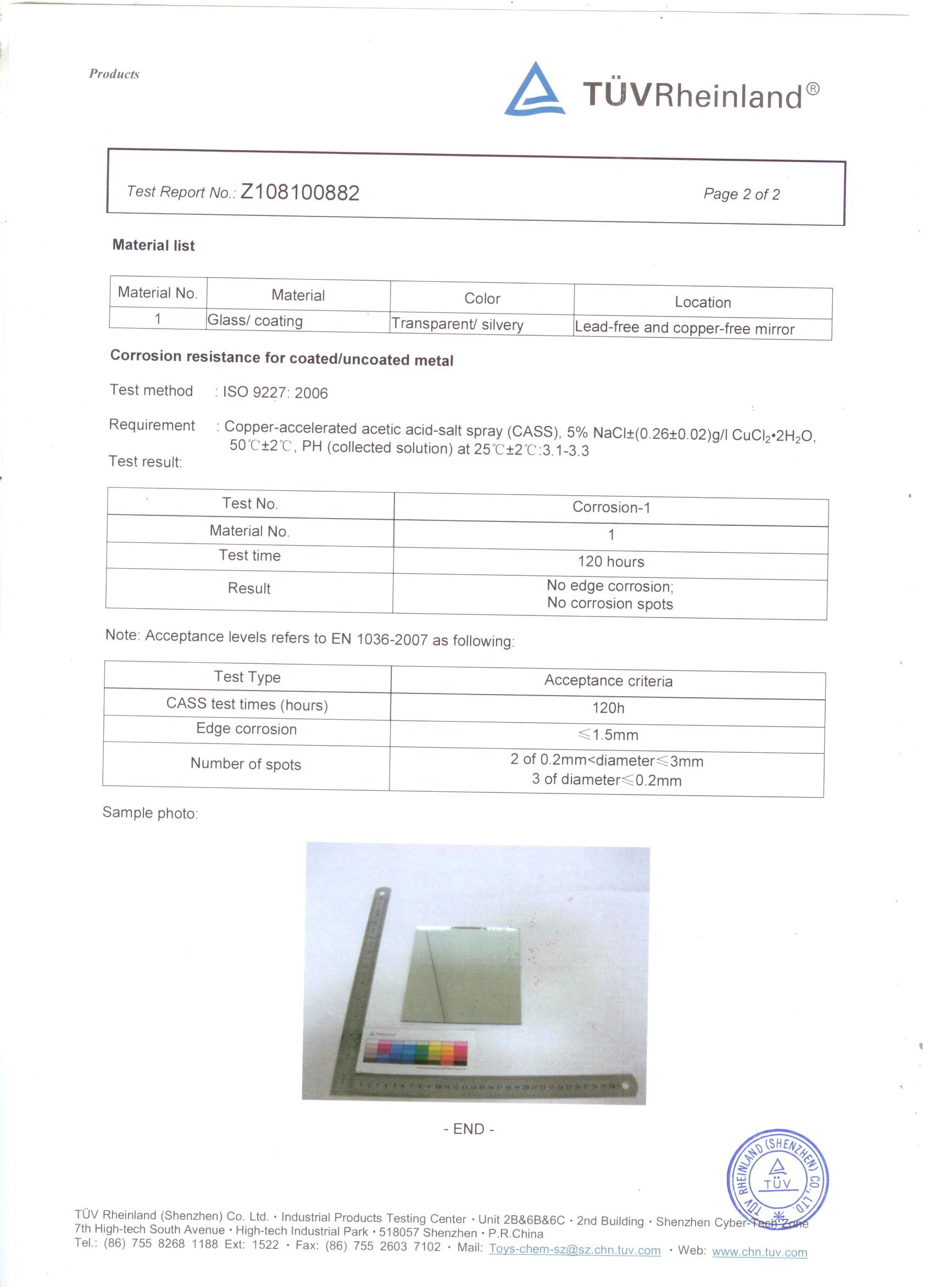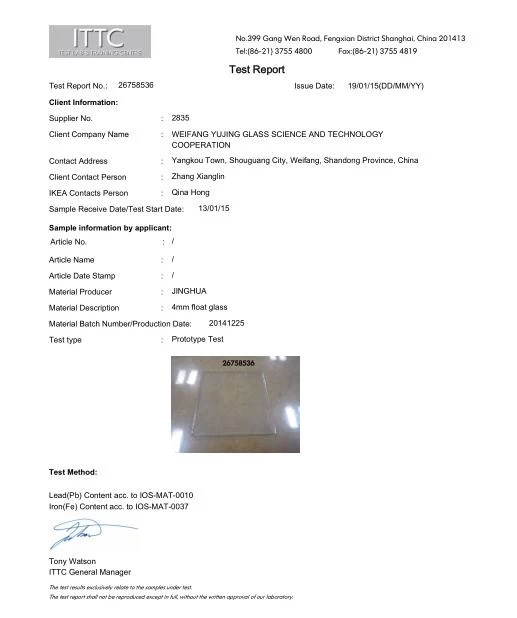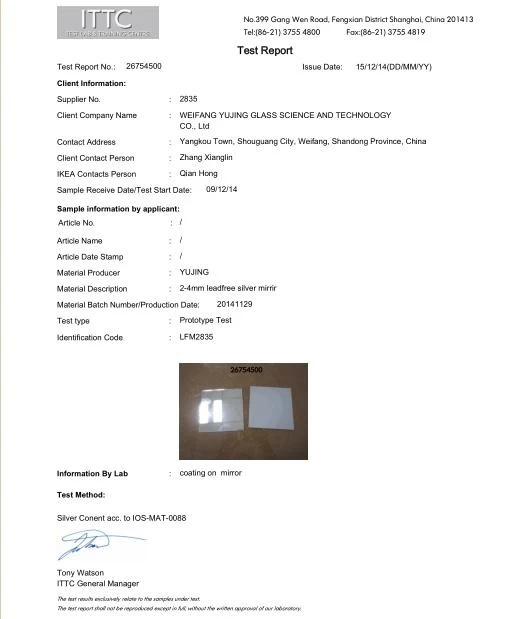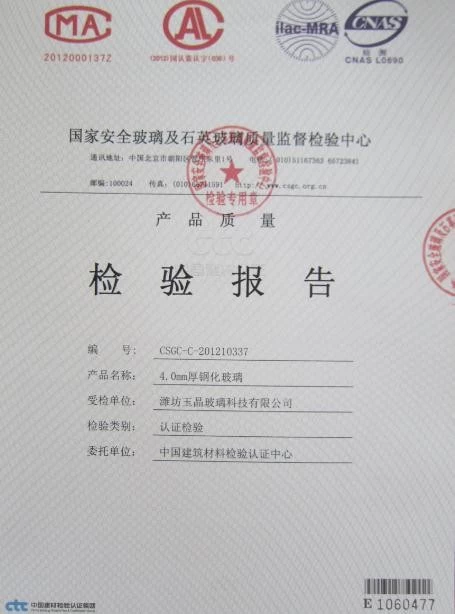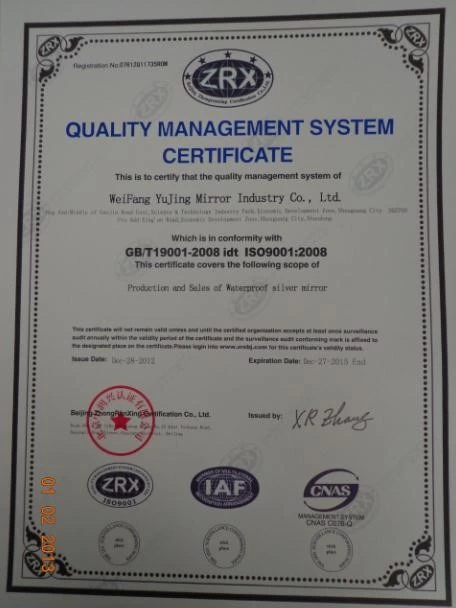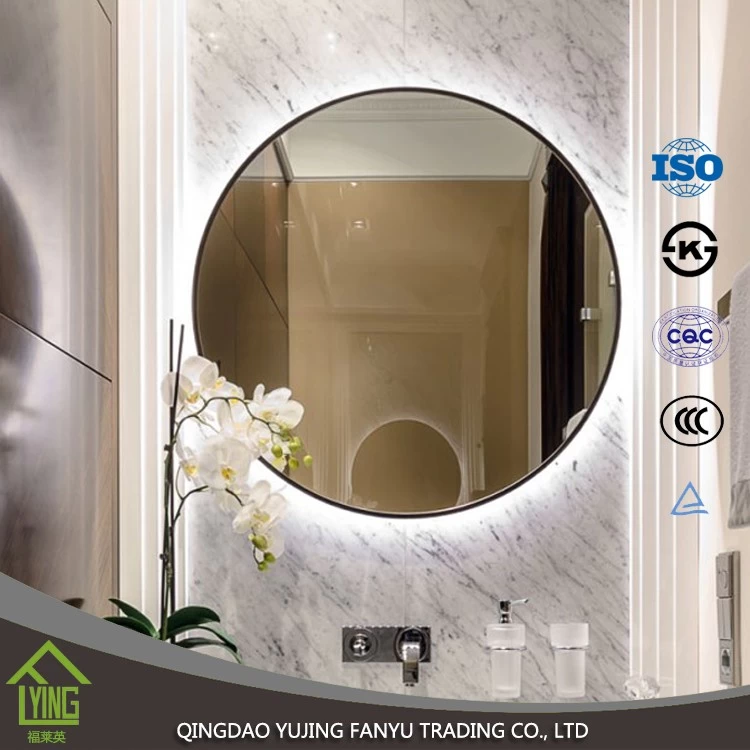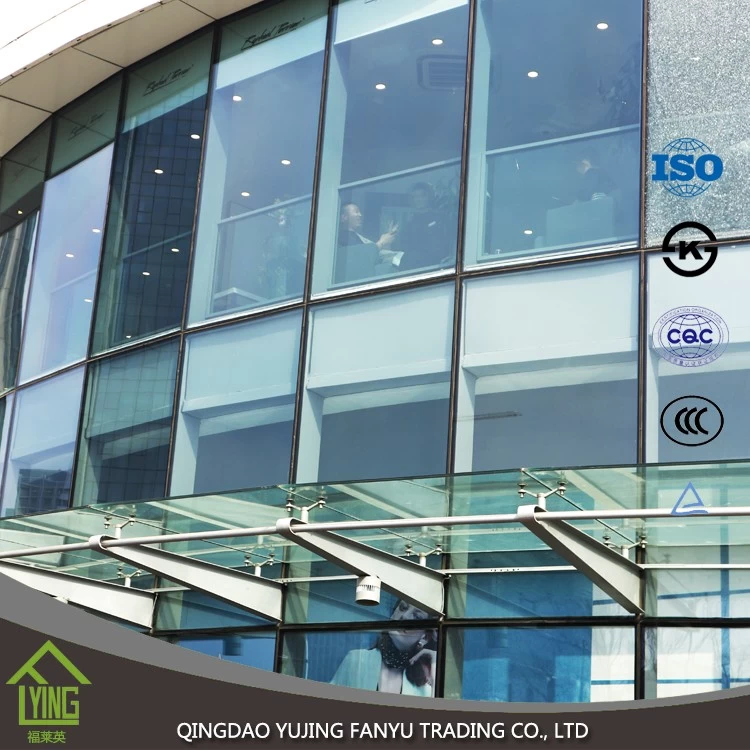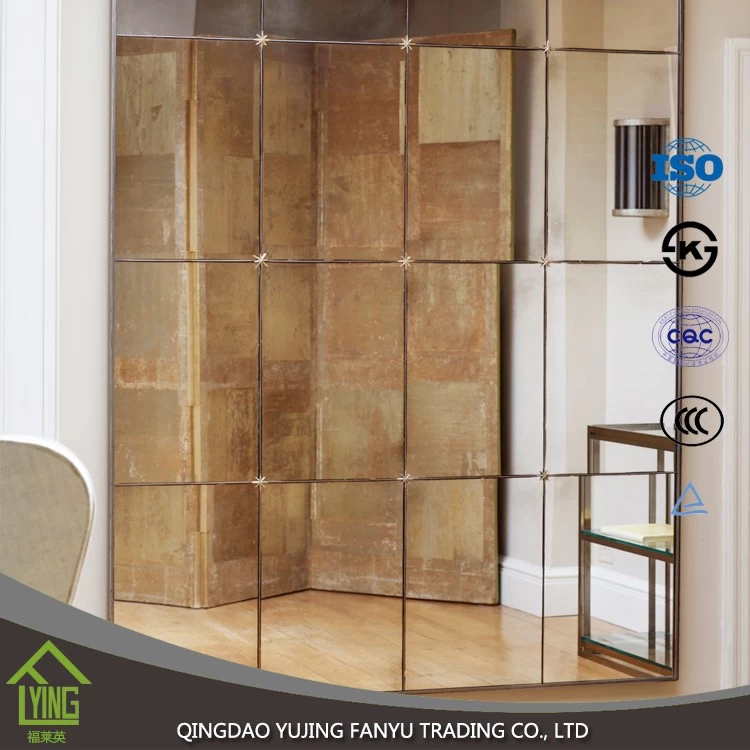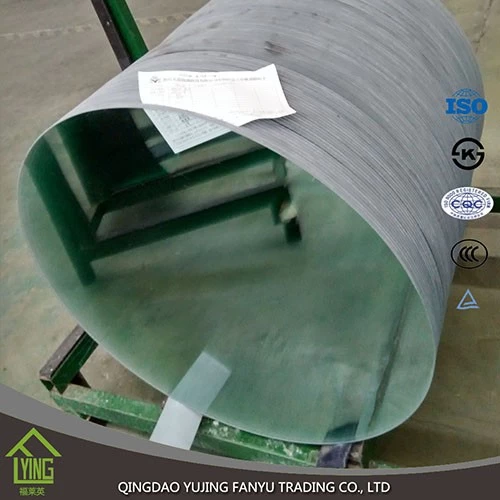Tempered glass burst reasons and its classification
fanyumaoyi
chinamirrormanufacturer.com
2017-02-17 10:04:15
Self classified 1, tempered glass tempered glass was born, accompanied with explosive problems. Tempered glass self can be expressed as the tempered glass in the case of no external direct action occur automatically broken. In steel processing, storage, transportation, installation, the use of tempered glass can occur during detonation. Burst according to different causes can be divided into two kinds: one is the visible explosion caused by a defect in the glass, such as stone, sand, air bubbles, inclusions, nicked, scratched, explosive side; in the second, made of glass nickel sulphide (NIS) tempered glass self caused by impurities and foreign particles.
2, since the explosion of the time there is no certainty may be fresh from the oven, or it may be 1-2 months after the factory, also has factory-1-2 years since the explosion, may cause more tempered glass self is a product 4-5 years after the production is completed. It is not fully understood, most manufacturers is the probability that the burst rate of about 3 per thousand; the probability of individual manufacturers may also be higher. Tempered glass explode because the root causes glass containing nickel sulphide and heterogeneous-phase particulate contamination, impurities are mixed with? Is still not clear how glass is mixed with nickel, the largest possible source is a device used on a variety of nickel-containing alloys parts and furnace using a variety of heat-resistant alloy. For oil-burning furnace, reported in small furnaces found in nickel-rich condensate. No doubt comes from the batch of sulfur and sulfur in the fuel elements. When the temperature exceeds 1000 ℃, nickel sulfides in the form of droplets present in the molten glass, curing temperature of these droplets is 797. 1 gram of nickel sulfide to build about 1000 stone 0.15mm diameter. Nickel sulfide can occur at any time after the production is completed, so they are not completely eliminated, so far no effective way to prevent known as "glass curtain walls of cancer." "Cancer of the glass curtain wall" from the mouth of renowned architect foster: that year, block of London City Hall designed by Stratton from the floor to ceiling height of the glass to break. The Town Hall is close to Tower Bridge, all made of glass cladding, the contractor has to check all the internal glass. London City Council spokesman said, according to the preliminary investigation, on the glass containing nickel sulphide is the problem, that is, glass contaminated by nickel in the construction process, sulphides of nickel and glass from a chemical reaction, causing rupture. Nickel sulfide class replacement is difficult since the explosion, high treatment costs, along with great quality complaints and financial losses, resulting in dissatisfaction with the owners and even more serious consequences. Called "glass curtain walls of cancer."
Second, tempered glass burst rate and cause of explosion
1, since the burst rate of the domestic manufacturers since the burst rate is inconsistent, ranging from 3%~0.3%. Since the burst rate is calculated according to the number of units, no single glass the size and thickness of the glass, so inaccurate, nor a scientific comparison. For reunification since the burst rate is measured, uniform assumptions must be determined. Set the conditions: 5~8 tons of glass containing a enough to trigger a burst of nickel sulfide; average area each piece of glass is 1.8mm; nickel sulfides are evenly distributed. Calculated 6mm thick tempered glass calculation of burst rate is 0.64%~0.54%, which is 6mm since the burst rate of tempered glass is approximately 3 ‰ ~5 ‰. This was consistent with the high level processing enterprises in China's actual value. Even if the full standard, could not completely avoid the tempered blast. Hundreds of tons of glass on a large building easily, which means that glass in nickel sulfide and heterogeneous impurities rate greater, although tempered by the hot-dip process, and self is still inevitable.
2, causes uncontrollable burst of tempered glass-nickel sulphide (NiS) and heterogeneous particles toughened uncontrollable self sources of NIS is not only in the traditional understanding of particles, there are many other different particles. The crack in the glass germination and expansion is mainly due to the particles caused by the residual stress in the vicinity. This type of stress can be divided into two categories, one is the phase transition phase stress in the expansion process, the other is residual stress generated by the coefficients of thermal expansion mismatch. Nickel sulphide (NIS) and heterogeneous particles. Glass internal contains sulfide nickel impurities, to small Crystal State exists, in general situation Xia, not caused glass damaged, but due to tempered glass again heating, change has sulfide nickel impurities of phase, sulfide nickel of high temperature alpha state in glass urgent cold Shi was freeze, they in recovery to beta state may need years of time, due to low temperature beta state of sulfide nickel impurities will produced volume increases, in glass internal produced local of stress concentrated, then tempered glass since burst will occurred. However, only larger impurities would cause a burst, and only when the impurity in the core parts of the tensile stress to tempered glass explode. NIS is a Crystal, there are two phases: phase-α--NIS and low-temperature phase β--NIS, phase change temperature is 379, when glass tempering furnace, heating temperature well above the temperatures, all NIS into the alpha phase. However in the quenched followed in the process of α--NIS time to change to beta--NIS, which was frozen in tempered glass. In room temperature environments, Alpha-NIS acid is unstable and has a tendency to gradually converted to β--NIS. This change accompanied about costing volume expansion, glass phase transition under tremendous tension, thereby to blow itself up. NIS made from shards of glass after the explosion of stones can be seen in the scanning electron microscope images, its surface rough, very rough. Heterogeneous particles cause the tempered blast, pieces of glass can rupture source cross section seen in this photo, a spherical particles due to cracked for the first time mark with secondary fragmentation of border district.
3, and how identification tempered glass of since burst first see initiation points (tempered glass crack is radiation-like, are has starting points) whether in glass middle, as in glass edge, General is because glass not after pour angle mill side processing or glass edge has injury, caused stress concentrated, crack gradually development caused of; as initiation points in glass Central, see initiation points whether has two small block polygon composition of similar two tablets butterfly wings like pattern (butterfly spot), as has carefully observation two small block polygon public side (butterfly of torso part) Small black particles visible to the naked eye (calculus of nickel sulfide), you can tell if it is self; otherwise it is external damage. Glass self is characterized by Butterfly spots. Radial distribution of glass debris and radiology centres there are two pieces of glass block shaped like a butterfly wings, commonly known as "butterfly spots." NIS stones in two "butterfly plaque" interface.
4, tempered mechanism theory of radial stress tangential stress r r ≥ a ≥ a, particles and of the interface between glass stress for heterogeneous particles in a glass matrix, process temperature is negative, so the particles around the radial stress is stress, shear stress is tension. Glass intermediate layer spherical silicon particles by scanning electron microscopy images and morphology of margin squeeze, particles around the radial stress is stress, shear stress is tension, shear stress is the cause of crack initiation.
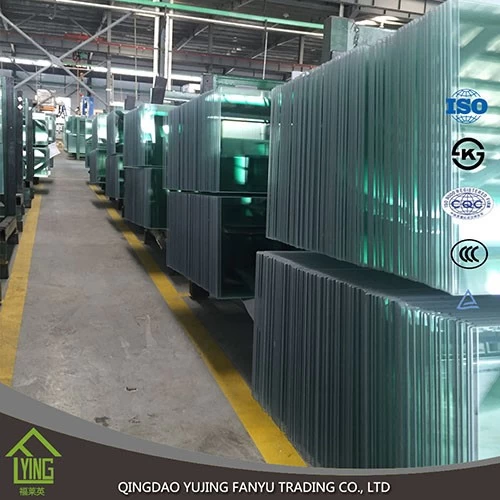
2, since the explosion of the time there is no certainty may be fresh from the oven, or it may be 1-2 months after the factory, also has factory-1-2 years since the explosion, may cause more tempered glass self is a product 4-5 years after the production is completed. It is not fully understood, most manufacturers is the probability that the burst rate of about 3 per thousand; the probability of individual manufacturers may also be higher. Tempered glass explode because the root causes glass containing nickel sulphide and heterogeneous-phase particulate contamination, impurities are mixed with? Is still not clear how glass is mixed with nickel, the largest possible source is a device used on a variety of nickel-containing alloys parts and furnace using a variety of heat-resistant alloy. For oil-burning furnace, reported in small furnaces found in nickel-rich condensate. No doubt comes from the batch of sulfur and sulfur in the fuel elements. When the temperature exceeds 1000 ℃, nickel sulfides in the form of droplets present in the molten glass, curing temperature of these droplets is 797. 1 gram of nickel sulfide to build about 1000 stone 0.15mm diameter. Nickel sulfide can occur at any time after the production is completed, so they are not completely eliminated, so far no effective way to prevent known as "glass curtain walls of cancer." "Cancer of the glass curtain wall" from the mouth of renowned architect foster: that year, block of London City Hall designed by Stratton from the floor to ceiling height of the glass to break. The Town Hall is close to Tower Bridge, all made of glass cladding, the contractor has to check all the internal glass. London City Council spokesman said, according to the preliminary investigation, on the glass containing nickel sulphide is the problem, that is, glass contaminated by nickel in the construction process, sulphides of nickel and glass from a chemical reaction, causing rupture. Nickel sulfide class replacement is difficult since the explosion, high treatment costs, along with great quality complaints and financial losses, resulting in dissatisfaction with the owners and even more serious consequences. Called "glass curtain walls of cancer."
Second, tempered glass burst rate and cause of explosion
1, since the burst rate of the domestic manufacturers since the burst rate is inconsistent, ranging from 3%~0.3%. Since the burst rate is calculated according to the number of units, no single glass the size and thickness of the glass, so inaccurate, nor a scientific comparison. For reunification since the burst rate is measured, uniform assumptions must be determined. Set the conditions: 5~8 tons of glass containing a enough to trigger a burst of nickel sulfide; average area each piece of glass is 1.8mm; nickel sulfides are evenly distributed. Calculated 6mm thick tempered glass calculation of burst rate is 0.64%~0.54%, which is 6mm since the burst rate of tempered glass is approximately 3 ‰ ~5 ‰. This was consistent with the high level processing enterprises in China's actual value. Even if the full standard, could not completely avoid the tempered blast. Hundreds of tons of glass on a large building easily, which means that glass in nickel sulfide and heterogeneous impurities rate greater, although tempered by the hot-dip process, and self is still inevitable.
2, causes uncontrollable burst of tempered glass-nickel sulphide (NiS) and heterogeneous particles toughened uncontrollable self sources of NIS is not only in the traditional understanding of particles, there are many other different particles. The crack in the glass germination and expansion is mainly due to the particles caused by the residual stress in the vicinity. This type of stress can be divided into two categories, one is the phase transition phase stress in the expansion process, the other is residual stress generated by the coefficients of thermal expansion mismatch. Nickel sulphide (NIS) and heterogeneous particles. Glass internal contains sulfide nickel impurities, to small Crystal State exists, in general situation Xia, not caused glass damaged, but due to tempered glass again heating, change has sulfide nickel impurities of phase, sulfide nickel of high temperature alpha state in glass urgent cold Shi was freeze, they in recovery to beta state may need years of time, due to low temperature beta state of sulfide nickel impurities will produced volume increases, in glass internal produced local of stress concentrated, then tempered glass since burst will occurred. However, only larger impurities would cause a burst, and only when the impurity in the core parts of the tensile stress to tempered glass explode. NIS is a Crystal, there are two phases: phase-α--NIS and low-temperature phase β--NIS, phase change temperature is 379, when glass tempering furnace, heating temperature well above the temperatures, all NIS into the alpha phase. However in the quenched followed in the process of α--NIS time to change to beta--NIS, which was frozen in tempered glass. In room temperature environments, Alpha-NIS acid is unstable and has a tendency to gradually converted to β--NIS. This change accompanied about costing volume expansion, glass phase transition under tremendous tension, thereby to blow itself up. NIS made from shards of glass after the explosion of stones can be seen in the scanning electron microscope images, its surface rough, very rough. Heterogeneous particles cause the tempered blast, pieces of glass can rupture source cross section seen in this photo, a spherical particles due to cracked for the first time mark with secondary fragmentation of border district.
3, and how identification tempered glass of since burst first see initiation points (tempered glass crack is radiation-like, are has starting points) whether in glass middle, as in glass edge, General is because glass not after pour angle mill side processing or glass edge has injury, caused stress concentrated, crack gradually development caused of; as initiation points in glass Central, see initiation points whether has two small block polygon composition of similar two tablets butterfly wings like pattern (butterfly spot), as has carefully observation two small block polygon public side (butterfly of torso part) Small black particles visible to the naked eye (calculus of nickel sulfide), you can tell if it is self; otherwise it is external damage. Glass self is characterized by Butterfly spots. Radial distribution of glass debris and radiology centres there are two pieces of glass block shaped like a butterfly wings, commonly known as "butterfly spots." NIS stones in two "butterfly plaque" interface.
4, tempered mechanism theory of radial stress tangential stress r r ≥ a ≥ a, particles and of the interface between glass stress for heterogeneous particles in a glass matrix, process temperature is negative, so the particles around the radial stress is stress, shear stress is tension. Glass intermediate layer spherical silicon particles by scanning electron microscopy images and morphology of margin squeeze, particles around the radial stress is stress, shear stress is tension, shear stress is the cause of crack initiation.






